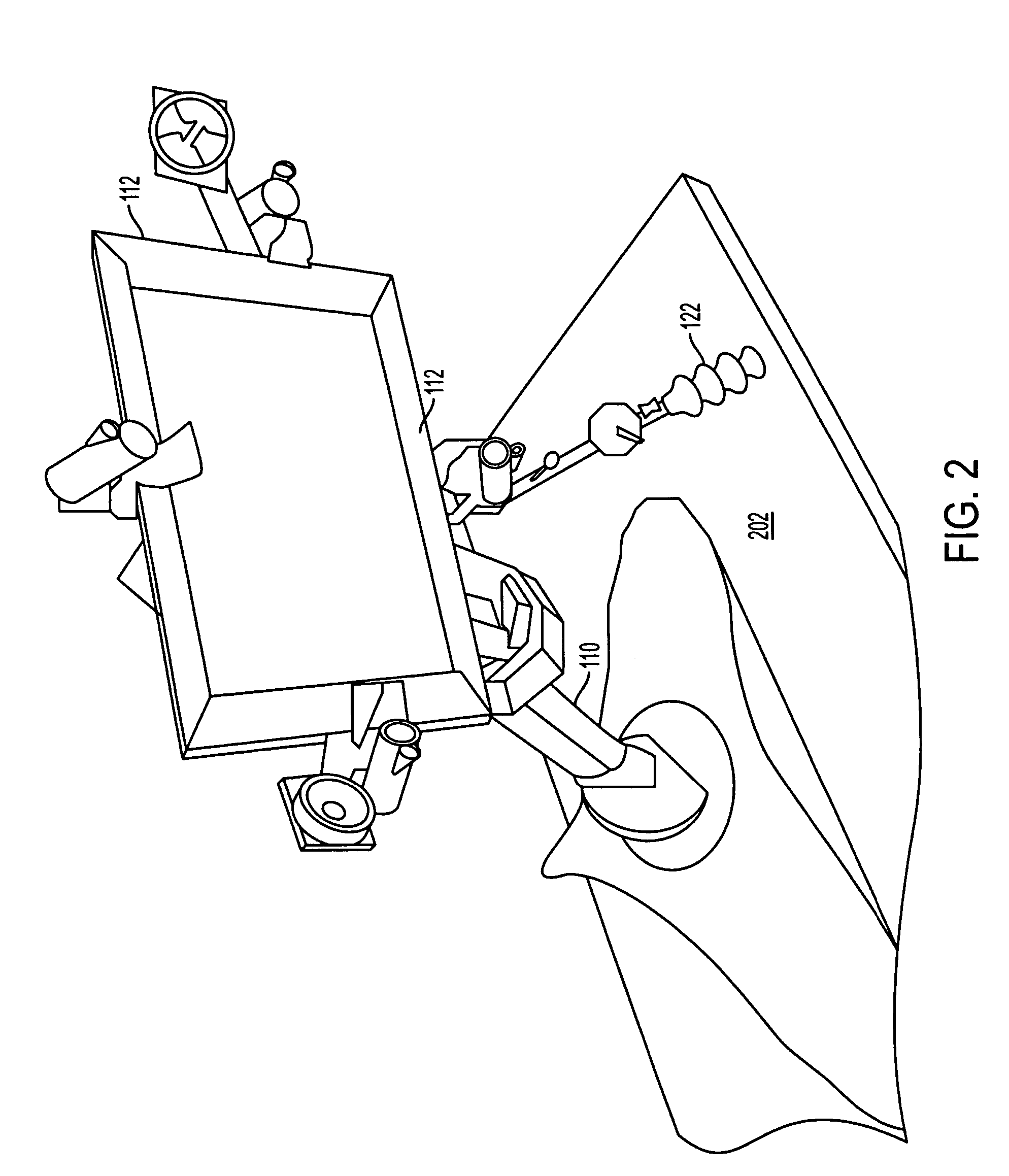Movable audio/video communication interface system
a communication interface and audio/video technology, applied in the field of moving audio/video communication interface systems, can solve the problems of inability to create a viable personal communication and computing environment for collaboration among individuals, video conferencing systems cannot provide true sight lines between participants, and inability to make eye contact between participants
- Summary
- Abstract
- Description
- Claims
- Application Information
AI Technical Summary
Benefits of technology
Problems solved by technology
Method used
Image
Examples
Embodiment Construction
[0028]The present invention, which can also be called a Compact, Collaborative, Desktop, Explorer (COCODEX), is a user interface technology that can provide a solution to some of the most important and longest standing problems in Virtual Reality, Tele-immersion, 3D visualization, and video teleconferencing technologies. The invention includes an assembly of display and sensor components mounted on a mechanical arm that allows the assembly to move to a wide variety of locations around a user's head. Because the display and sensors are mobile, it is possible to keep them within constrained positions or tolerances relative to the user's face or head as the user looks around, thus making a variety of functions reliable that are not reliable in other configurations. These include auto-stereo display effects, 3D audio without headphones, machine vision analysis of the user's face, illumination of the face, audio sensing of the voice, and so on. This can be accomplished without physical c...
PUM
 Login to View More
Login to View More Abstract
Description
Claims
Application Information
 Login to View More
Login to View More - R&D
- Intellectual Property
- Life Sciences
- Materials
- Tech Scout
- Unparalleled Data Quality
- Higher Quality Content
- 60% Fewer Hallucinations
Browse by: Latest US Patents, China's latest patents, Technical Efficacy Thesaurus, Application Domain, Technology Topic, Popular Technical Reports.
© 2025 PatSnap. All rights reserved.Legal|Privacy policy|Modern Slavery Act Transparency Statement|Sitemap|About US| Contact US: help@patsnap.com



